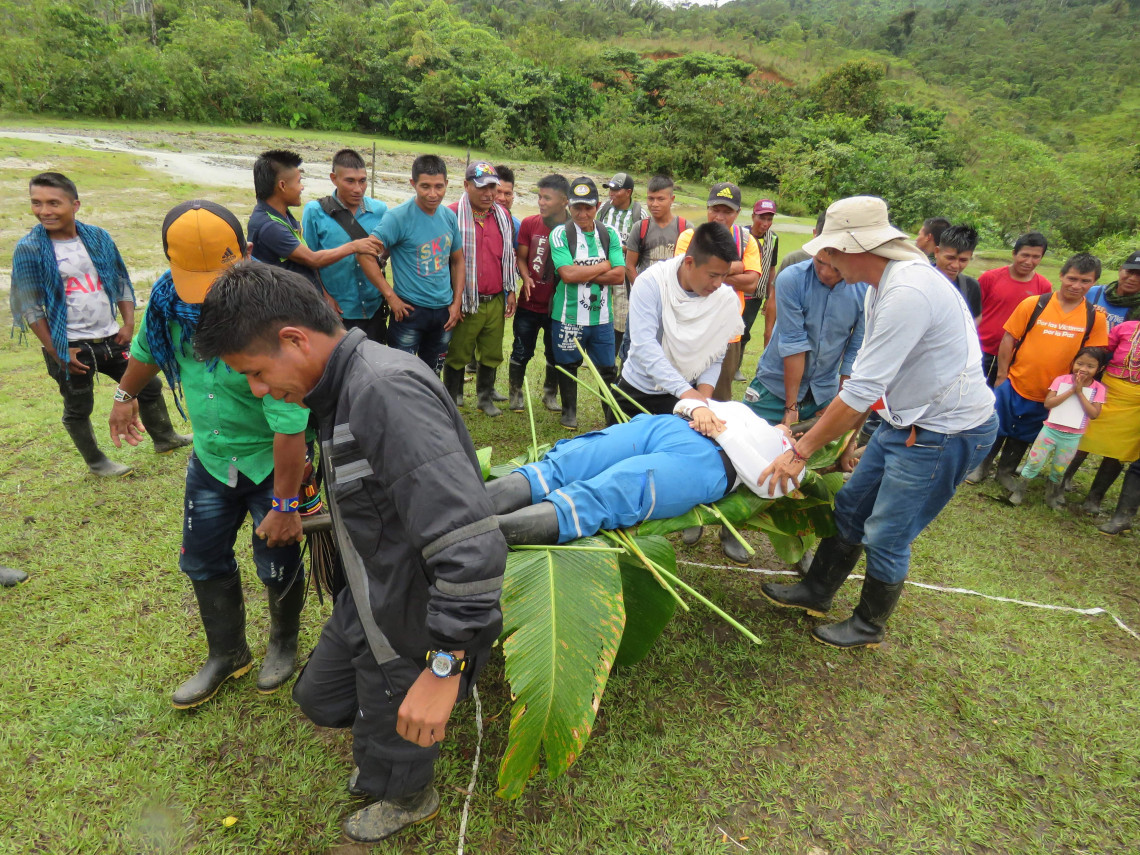
The constant threat of explosive hazards

In 2022, whole communities experienced fear, anxiety, and powerlessness as a result of the risks posed by explosive hazards, which make it impossible for civilians to move freely across their area of residence, fish, hunt, or access crops or other forms of subsistence. In addition, they prevented people from getting access to basic services such as health care and education and increased the vulnerability of children and teenagers, who, by being deprived of safe spaces, remained at greater risk of becoming involved in the armed conflicts.
The number of people who are direct victims also highlights the gravity of this issue. Last year, we recorded 515 victims of anti-personnel landmines, explosive remnants of war, launched explosives and controlled detonation devices. Of these, 56 people were killed; the remainder survived with physical and psychological scars that may stay with them for the rest of their lives.
These cases were recorded in 18 departments, of which six – Cauca, Antioquia, Arauca, Nariño, Norte de Santander and Meta – were the worst affected, accounting for 70 per cent of all victims. Unfortunately, the analysis shows that new areas have now been hit by this issue.
Of the 86 municipalities in which incidents occurred last year, 57 per cent had recorded no victims in 2021. In 2022, incidents involving explosive hazards were recorded in 26 new municipalities that had not recorded any victims of such hazards in the previous four years. These figures show that the evolution of this issue is bound up with the dynamics of the armed conflicts and violence, which are constantly shifting and can vary widely from one area to another.

2022 WAS THE YEAR WITH THE HIGHEST NUMBER OF VICTIMS OF ACCIDENTS WITH EXPLOSIVE DEVICES. THE HIGHEST NUMBER SINCE 2017.
The type of explosive hazard has altered. Last year, the number of victims of anti-personnel landmines and explosive remnants of war dropped by 13 percent year on year. However, use of launched explosives and controlled detonation devices increased, accounting for 69 percent of all victims of explosive weapon.
One of the most worrying aspects of this issue is its impact on the civilian population. In total, 54 percent of the victims recorded last year were civilians, of which 43 were children.
This situation adds to the complexity of the outlook for these communities. For example, there were 30 municipalities that recorded incidents involving explosive hazards where, in addition, the local population also had to deal with mass displacement and confinement. Cases like this also occurred in areas that recorded no direct victims but in which the presence of explosive hazards has had devastating effects.
All the above shows the size of the issue and the scale of human suffering. It is crucial that armed actors, state institutions and wider society are made aware of what these communities are going through, a daily reality that is not normal and should not be normalized.
More about 'Humanitarian Challenges 2023'
- Civilian population trapped in fear and anxiety
- "The importance of humanitarian action" Lorenzo Caraffi
- Unending uncertainty
- Health in the midst of conflict
- Overcrowding in temporary detention centres getting worse
- Releases: A reflection of our role as neutral intermediary
- Calls to action from ICRC to Colombia in 2023
- Colombia: Stories from the field
